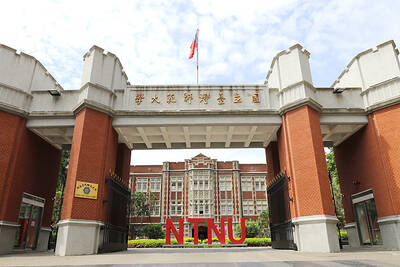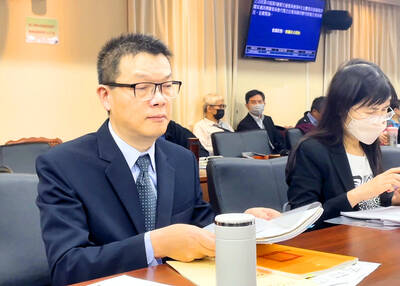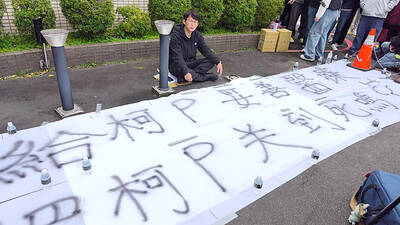A former Water Resources Agency (WRA) official's letter to a newspaper, which said that additional construction work on Shihmen Reservoir dam might damage the structure and cause it to collapse, sparking concerns about public safety and questions as to whether the dam is safe.
The letter was written by former WRA deputy director-general Wu Hsien-hsiung (吳憲雄), and was published in the Chinese-language newspaper China Times on Aug. 16. In the letter, Wu said that the additional construction -- huge water pipes and pumps on the top of the dam -- could damage the structure, make it leak and possibly even cause it to collapse. If that happened, water from the reservoir would flood most of Taoyuan and Taipei counties and more than 3.5 million residents in Taipei and Taoyuan counties could be killed within a few minutes.
"The entire process would take less than two hours," Wu said in his letter.
STRAIN
Wu said that ever since the dam was completed, officials have banned buses, trucks and other large vehicles with more than six wheels from using the road on top of the dam, due to concern that the structure could be damaged. Therefore, he wrote, he could not believe that officials would now put so much heavy additional construction work on the dam.
"One more major earthquake and the dam could collapse," he said.
Obviously, Wu's letter to the editor rattled the public, and sparked concerns about the safety of the dam. Even Premier Frank Hsieh (謝長廷) got involved in responding to the warning by the former government official, and asked water resource experts as well as engineers and architects to determine whether the dam posed a danger to the public.
"I think my former supervisor [Wu] must have misunderstood," said Lai Bo-hsun (
Lai said that the pumps are all situated on floating docks in the reservoir, and only pipes go through the top of the dam. He said that the vibration these pipes cause remains within a safe range, and the office has assigned experts to monitor any additional construction, as well as to inspect the structural integrity of the dam from time to time.
"There is no problem with it," he said.
However, despite such guarantees, Wu's concerns seem to have won the support of other water resource experts and engineers.
"I do not believe that there is any immediate danger from the dam or the possibility that it might collapse anytime soon. However, I do recommend that officials remove the additional construction work as soon as possible," said Lee Hong-yuan (
"So long as any construction was not included in the original design for the dam, it should be taken out, or it will definitely and gradually damage the main structure, sooner or later," Lee said.
In addition to potential damage to the dam, Lee also said that more maintenance work must be carried out to prolong the life of the reservoir.
According to the professor, due to its original design, water from the Shihmen Reservoir is definitely muddier than the water from other reservoirs. But the muddy water has not been a problem, because the Shihmen Reservoir was initially built for agricultural purposes. However, it has since become a main reservoir providing water supplies for daily use in Taoyuan and Taipei counties.
"In addition to regular maintenance work to clean up the mud in the reservoir, I think officials must pay attention to water and soil preservation in the upstream areas of the reservoir," he said.
According to the WRA, the Shihmen Reservoir was completed in 1964. Its maximum capacity is 340 million tonnes of water. In addition to the Shihmen Reservoir, there are 92 other reservoirs in Taiwan. There has been no record of a dam collapse in Taiwan's history. However, there have been examples of dams collapsing because of heavy rains brought by typhoons in modern history.
For example, a typhoon that formed near Guam in July 1975 swept through Taiwan then touched down in China -- the country with the most reservoirs in the world -- bringing a downpour of approximately 800mm in a day in Henan Province. The downpour caused dams to collapse in the Panchiao Reservoir and Shihmantan Reservoir. Information from the Chinese government stated that the collapse of the two dams killed less than 10,000 residents. However, Western news agencies reported that nearly 230,000 people were killed and more than 6.8 million houses were leveled.
OTHER ISSUES
In addition to the public concerns surrounding the safety of the dam, Liu Chao-min (
According to him, to build a reservoir will have several adverse effects, including: Reducing the natural water-supply from a river in its downstream areas; the weight of the water in a reservoir is likely to trigger more earthquake activities if the reservoir is built on a fault; building a reservoir will force thousands of local residents to relocate, which costs a lot of money; building a reservoir will definitely change the natural appearance and damage the natural environment, and some of that damage may be irreversible.
"We need alternative ways to solve our water-shortage problems instead of just building more reservoirs and devastating our natural environment," Liu said.

CHANGING LANDSCAPE: Many of the part-time programs for educators were no longer needed, as many teachers obtain a graduate degree before joining the workforce, experts said Taiwanese universities this year canceled 86 programs, Ministry of Education data showed, with educators attributing the closures to the nation’s low birthrate as well as shifting trends. Fifty-three of the shuttered programs were part-time postgraduate degree programs, about 62 percent of the total, the most in the past five years, the data showed. National Taiwan Normal University (NTNU) discontinued the most part-time master’s programs, at 16: chemistry, life science, earth science, physics, fine arts, music, special education, health promotion and health education, educational psychology and counseling, education, design, Chinese as a second language, library and information sciences, mechatronics engineering, history, physical education

DEADLOCK: As the commission is unable to forum a quorum to review license renewal applications, the channel operators are not at fault and can air past their license date The National Communications Commission (NCC) yesterday said that the Public Television Service (PTS) and 36 other television and radio broadcasters could continue airing, despite the commission’s inability to meet a quorum to review their license renewal applications. The licenses of PTS and the other channels are set to expire between this month and June. The National Communications Commission Organization Act (國家通訊傳播委員會組織法) stipulates that the commission must meet the mandated quorum of four to hold a valid meeting. The seven-member commission currently has only three commissioners. “We have informed the channel operators of the progress we have made in reviewing their license renewal applications, and

The High Prosecutors’ Office yesterday withdrew an appeal against the acquittal of a former bank manager 22 years after his death, marking Taiwan’s first instance of prosecutors rendering posthumous justice to a wrongfully convicted defendant. Chu Ching-en (諸慶恩) — formerly a manager at the Taipei branch of BNP Paribas — was in 1999 accused by Weng Mao-chung (翁茂鍾), then-president of Chia Her Industrial Co, of forging a request for a fixed deposit of US$10 million by I-Hwa Industrial Co, a subsidiary of Chia Her, which was used as collateral. Chu was ruled not guilty in the first trial, but was found guilty

Taiwan People’s Party (TPP) Chairman Huang Kuo-chang (黃國昌) yesterday appealed to the authorities to release former Taipei mayor Ko Wen-je (柯文哲) from pretrial detention amid conflicting reports about his health. The TPP at a news conference on Thursday said that Ko should be released to a hospital for treatment, adding that he has blood in his urine and had spells of pain and nausea followed by vomiting over the past three months. Hsieh Yen-yau (謝炎堯), a retired professor of internal medicine and Ko’s former teacher, said that Ko’s symptoms aligned with gallstones, kidney inflammation and potentially dangerous heart conditions. Ko, charged with